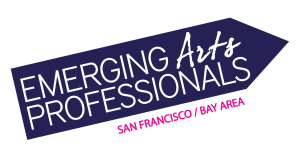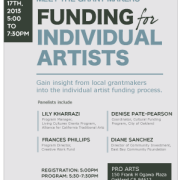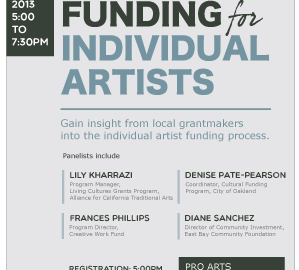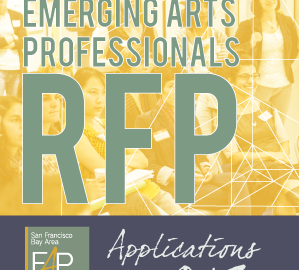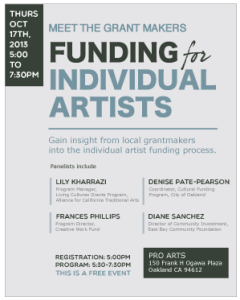Half Sized Blog Element (Single Author Style)
Half Sized Blog Element (Multi Author Style)
Meet the Grantmakers – Funding for Individual Artists
Thursday, October 17TH, 2013 5:00pm to 7:30pm ProArts Gallery 150 Frank H Ogawa Plaza Oakland CA 94612 Gain insight from local grantmakers into the individual artist funding process. Join us for this unique program featuring local Bay Area arts funders as they describe their organization’s funding priorities and guidelines, discuss regional arts and culture funding […]
RFP CALL – EAP presents: (your idea here)
What can our network do to make the arts sector healthier, and better reflect our values of empowerment, relevance, and diversity? EAP invites you, as a member of the network, to propose and help execute a project that helps to fulfill our mission. An online meet-up, a skill-share session, a social media campaign, or big […]
Meet the Grantmakers – Funding for Individual Artists
Thursday, October 17TH, 2013 5:00pm to 7:30pm ProArts Gallery 150 Frank H Ogawa Plaza Oakland CA 94612 Gain insight from local grantmakers into the individual artist funding process. Join us for this unique program featuring local Bay Area arts funders as they describe their organization’s funding priorities and guidelines, discuss regional arts and culture funding […]
RFP CALL – EAP presents: (your idea here)
What can our network do to make the arts sector healthier, and better reflect our values of empowerment, relevance, and diversity? EAP invites you, as a member of the network, to propose and help execute a project that helps to fulfill our mission. An online meet-up, a skill-share session, a social media campaign, or big […]
